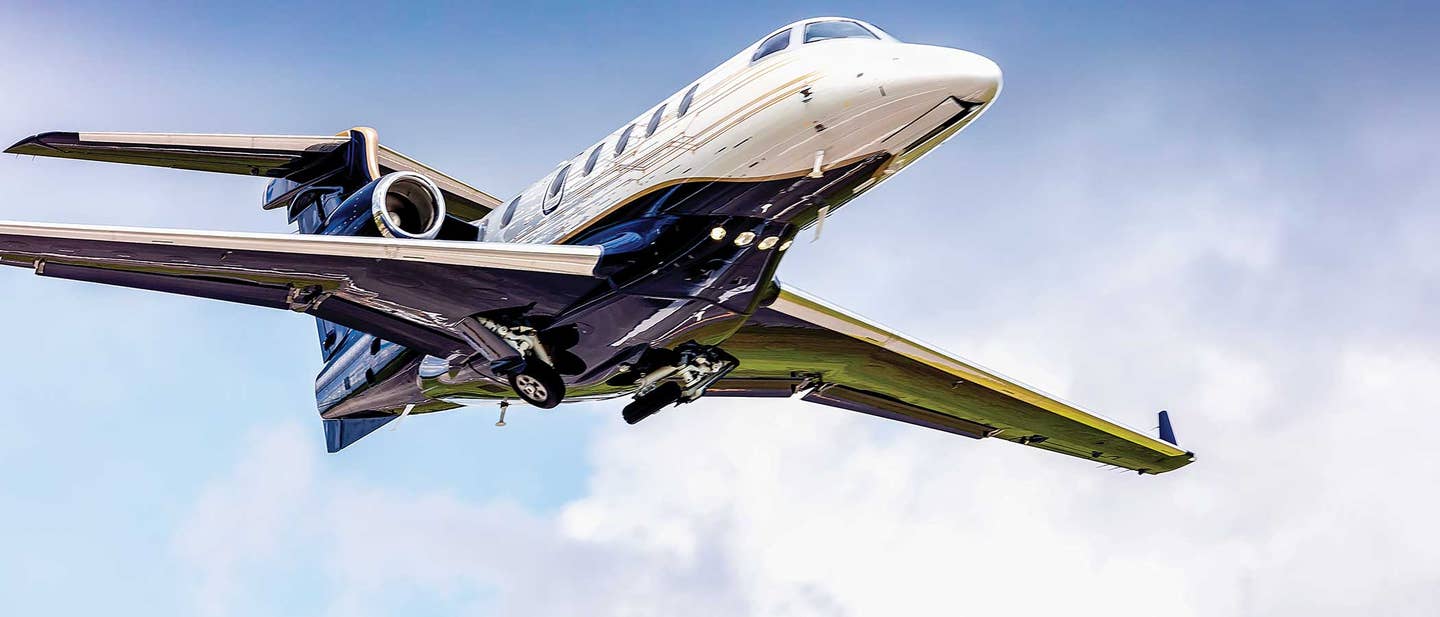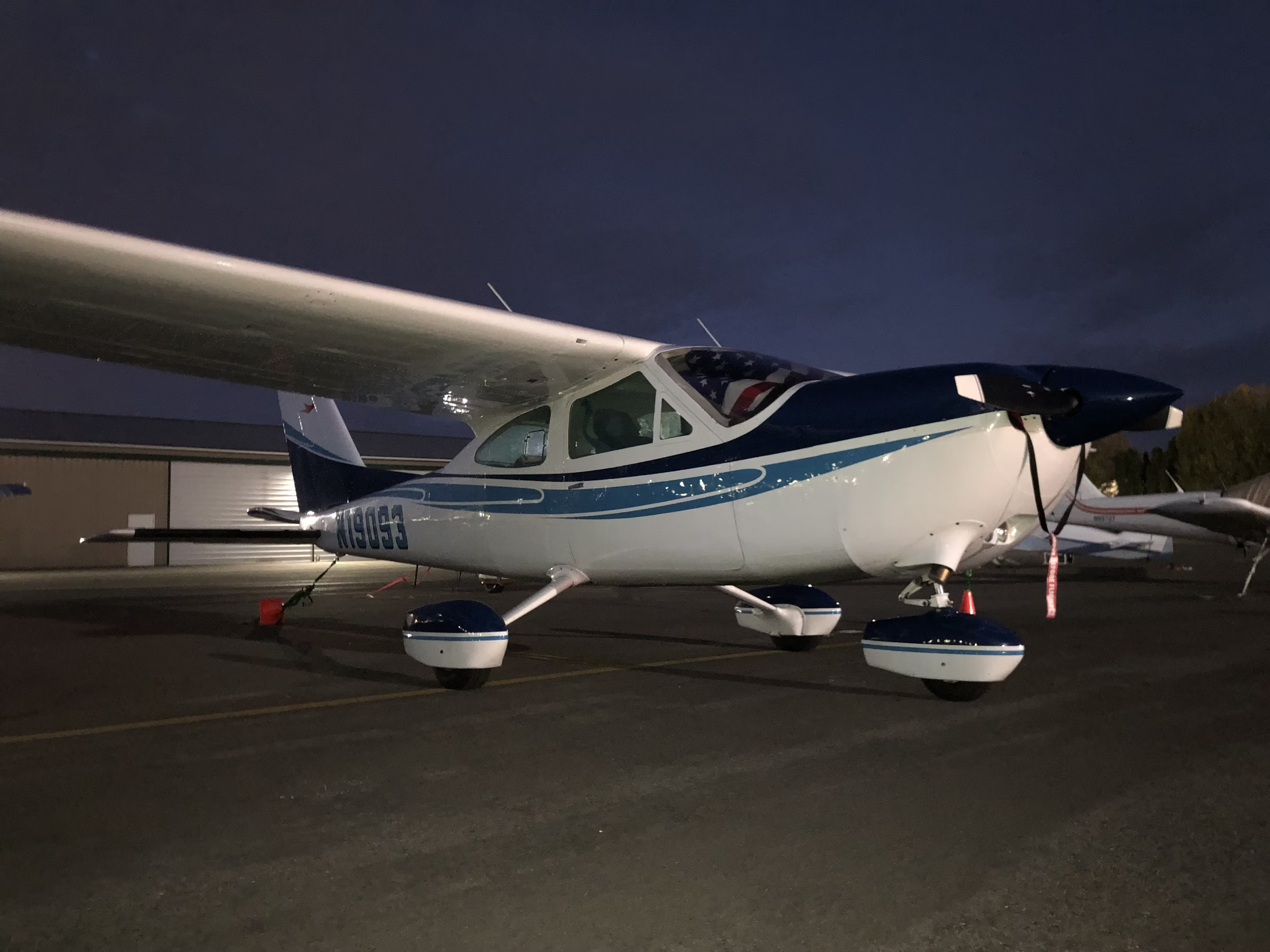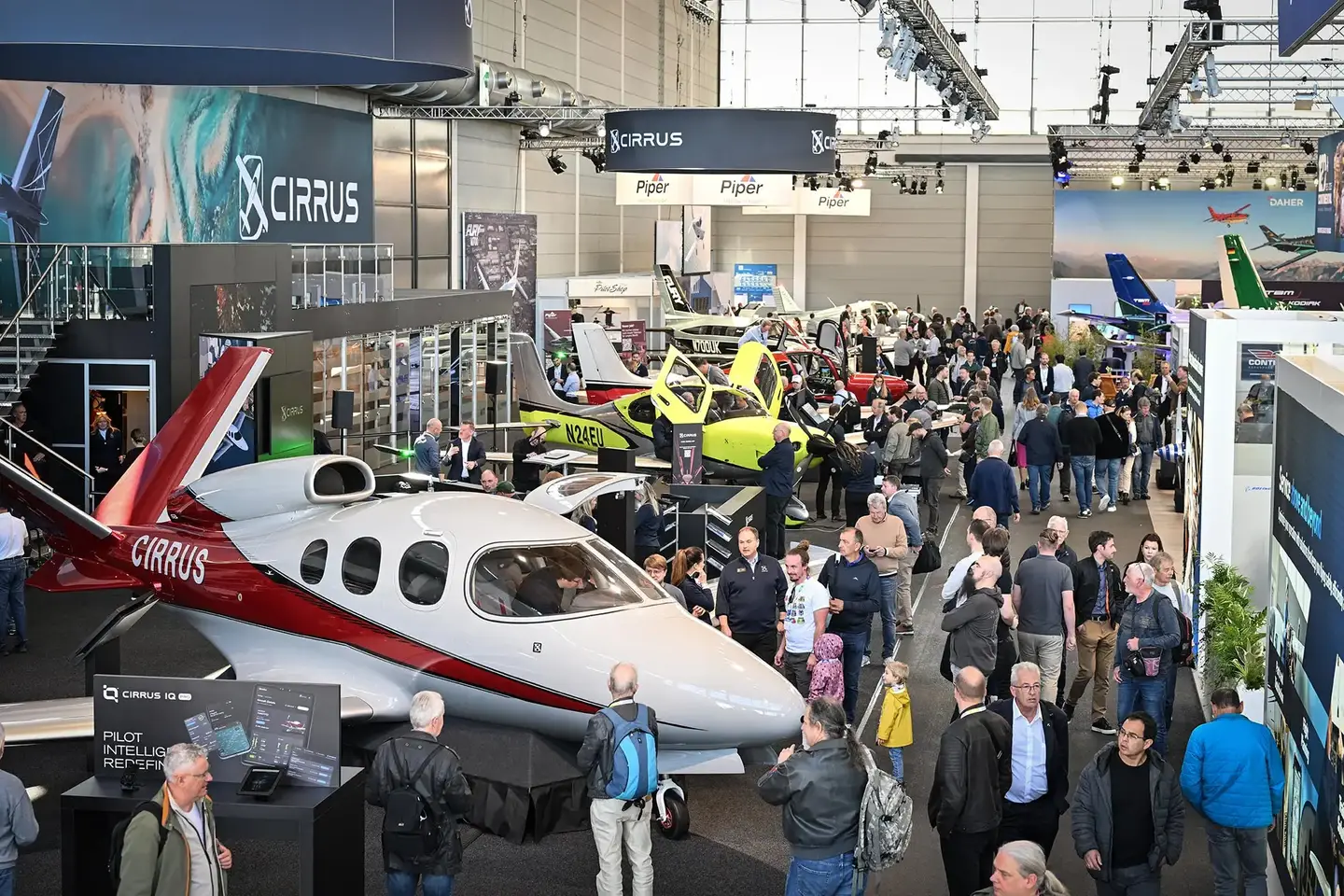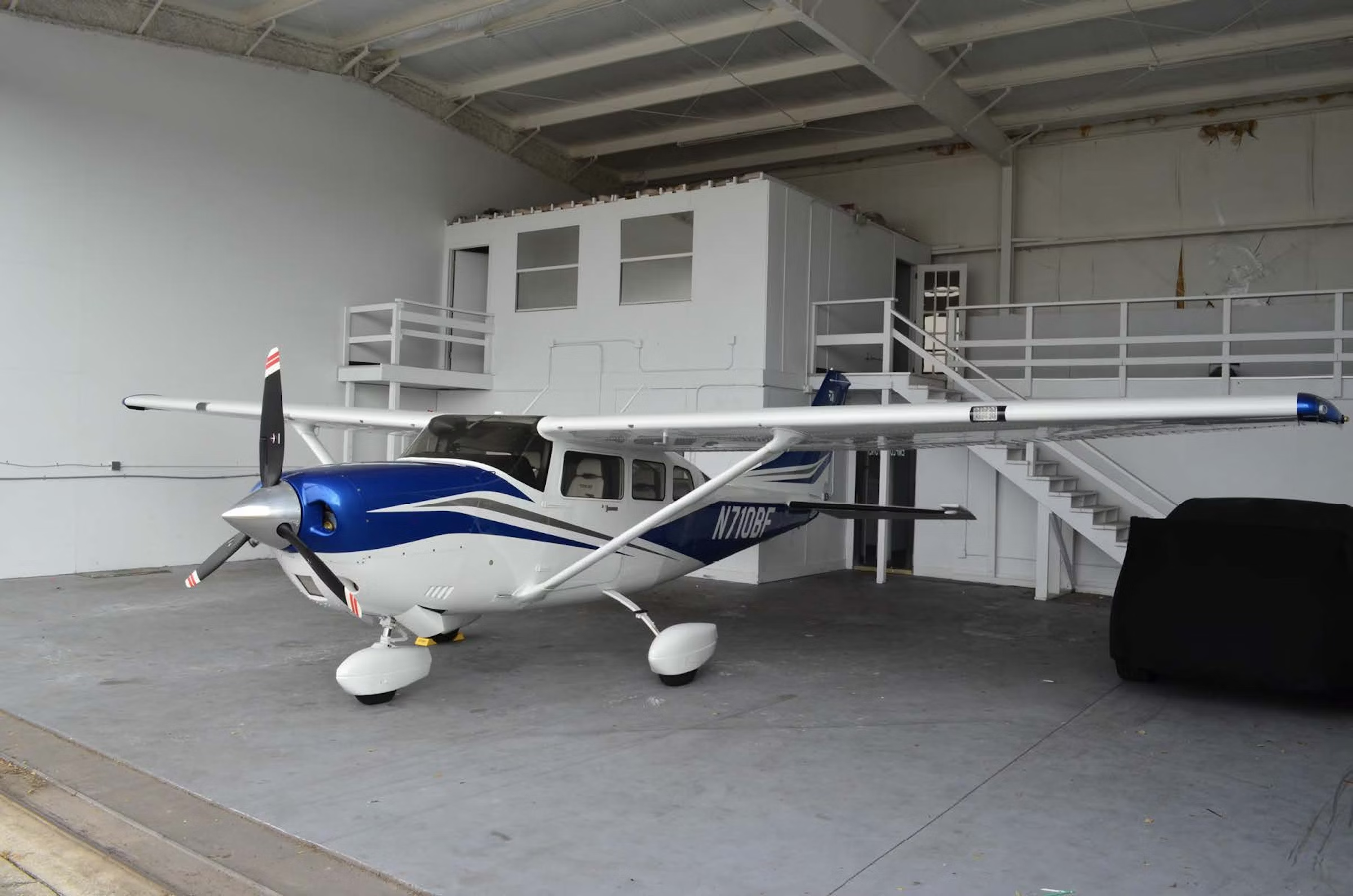
What a difference a letter can make. Just take the “E” model of Embraer’s successful Phenom 300. The 300 has been a popular airplane from the start. The company says that at this moment, the factory at São José dos Campos Airport in Brazil just began building the 500th copy, although the E models only joined the family in March 2018. Embraer says 19 Phenom 300Es have joined the world fleet so far, with charter operator Executive AirShare being the first commercial operator to fly both the earlier model and the new Phenom 300E. In case you’re wondering, you didn’t miss the A through D models of the 300. There weren’t any. The “E” on this Phenom 300 actually stands for “enhanced,” and it is now the only Model 300 in production.
Surprisingly, if you buy a Phenom 300E today you’ll receive an aircraft that performs pretty much like the 300 you could have purchased three years ago. On the outside, it’s the very same airplane. Inside, though, there’s very little of the original Phenom 300 left. Customer feedback convinced Embraer that while people loved the airplane’s performance, the cabin and the cockpit needed some additional TLC, and hence the E model was born.
Embraer took care not to tinker with what wasn’t broken and left the 300’s performance intact, so the 300E is also capable of carrying six people nearly 2,000 nm with fuel reserves. In near-commuter configuration, you can board nine people plus one pilot, assuming the autopilot and flight director are operational. At top speed, the 300E streaks along at 453 knots, up to a maximum altitude of 45,000 feet, all while keeping the cabin at a relatively comfy 6,600 feet. To make its best range with six people aboard, though, the pilot must pull the throttles back for a less gas-guzzling 385 knots at Mach 0.68.
Learning from the Past
Taking lessons from earlier aircraft design efforts with the Legacy 450/500, the Phenom 300 teams spent months interacting with customers to learn their whims and hear suggestions for specifics of how to make this solid performer a bit comfier inside. Embraer’s Phenom product strategist in Brazil, Marcello Cruz, says the update is nothing short of a “total redesign of the 300’s interior.” It includes new tables, new window shades and mechanisms, redesigned seats and new upper deck and ceiling panels.
The seats include new retractable armrests and thigh supports, as well as tracks that allow cabin seats to pivot away from the side walls to make passengers feel less hemmed in. The retractable armrests also helped create a center aisle that’s 3 inches wider than in the original 300. Although the windows are the same as the original aircraft, the 300E incorporates the same window-shade technology used on the Legacy 450 and 500 to make them easier to operate than the originals, which apparently demanded considerable force to operate. An easy-to-move handle at the bottom of the window now makes opening and closing the shades possible using only two fingers.
The 300E includes cleverly designed drawers some 12 inches deep hidden beneath the seats, perfect for snacks, reading materials or even a standard 9.7-inch-screen iPad. Passengers standing up will find more space near the ceiling — except for the video screens — because the new dome design recessed much of the traditional lighting and air gaspers. Lighting sources have evolved into LED fixtures that are less costly to operate and easier to repair. Because the headrests are now integrated into the top of the seats rather than standing alone, the view forward from the rear of the cabin is improved.
Cruz says the company’s interior-design center in Melbourne, Florida, was formed to provide customers with dozens, if not hundreds, of options when considering colors and types of upholstery. He says they’ll see “more than 90 material options like wood veneer, leather, carpet, fabric and plating from which customers can mix and match to personalize their aircraft interior.” For customers who can’t make it to Florida, Embraer will travel to them, but still prefers people to see all the possibilities, rather than only what can be transported from Melbourne. Unfortunately for current Phenom 300 owners, the new interiors are not retrofittable to earlier aircraft.
The 300E offers a range of cabin seating options that includes the two pilot seats in the cockpit and as few as seven in the cabin, including the optional use of a belted lavatory seat. In maximum seating configuration, the aircraft will hold 11 people total using standard club seating at midcabin, the belted lavatory seat and a two-person divan near the entry door. Beyond nine passengers, Embraer reminds operators of the additional regulations in place, lest they forget what a single pilot is allowed to command. Per FAA regulations, the maximum number of passengers aboard the Phenom 300E is nine. Part 135’s dual-pilot requirement limits passengers to nine, and Part 91 limits nine passengers for single-pilot operation. Therefore, if a passenger occupies the right seat in the cockpit under Part 91 operation, a maximum of eight passengers is allowed in the cabin.
The original Phenom 300 baggage compartments are still distributed around the airplane, with an 8-cubic-foot compartment in the nose that holds 110 pounds, a 6-cubic-foot area near the refreshment center adjacent to the entry door that holds 44 pounds, a 4-cubic-foot area in the lavatory that holds 33 pounds and an optionally heated 66-cubic-foot rear compartment capable of holding 463 pounds. The rear compartment is not accessible in flight.
Integrated Operations
A goal of the redesign was to rid the cabin of many of the switches and knobs used to control most everything. Embraer’s partner in the interior rework was Lufthansa, creator of the patented “nice-HD” system, which translates into Lufthansa Technik’s high-definition networked integrated cabin equipment management and inflight entertainment system. Designers worked hard to make the controls blend in everywhere. The nice-HD includes touchscreen controls that are hidden beneath veneer covers in the side panels, and the cabin sports plenty of USB charging outlets for phones and tablets.
Passengers can view moving map displays that offer time to destination fed to their personal devices through Bluetooth. The ceiling area near the forward club seating area offers a pair of 7-inch video screens that flip down and swivel. Passengers walking in the cabin will need to pay close attention to the ceiling lest they bump into those hanging screens. Unfortunately, there is no option for additional screens to cover the passengers seated in the rear of the cabin.
Although there’s no dedicated Wi-Fi server on the 300E, Embraer offers a service that allows passengers to bring their personal content and stream audio via Bluetooth and video through the HDMI port, where passengers can also connect devices such as Apple TV and Chromecast. In addition, Lufthansa Technik is developing its AVOD (audio and video on demand) service, as well as a stand-alone unit for passengers to pre-load audio and video content on the ground to be served by the nice-HD entertainment system in flight. The full-service and stand-alone units are expected to become available in the coming months.
Pilots Were Not Forgotten
Embraer’s redesign of the 300E wasn’t limited to the main cabin. Up front, the original Garmin Prodigy G1000 avionics suite was swapped out for a newer G3000 system branded Prodigy Touch. The 300E is, in fact, the first aircraft to fly with the new Garmin touchscreen technology, a system designed from the beginning with the single-pilot operator in mind. With Prodigy Touch there are still three panel displays in the 300E, but they’ve grown to 14.1 inches from the smaller 12.4-inch displays used with the G1000 system.
Beneath the center panel, pilots will find that many of the old push buttons and twist knobs have been incorporated into a pair of 5.7-inch high-resolution touchscreen controllers to manage the avionics, intercom, transponder, checklists and all flight-plan-entry tasks. Both touchscreens do incorporate a tuning knob, but only as a backup to the screens. The touchscreens use icons to speed the pilot’s hunt for the correct menu, important for pilots flying alone. Even flight-planning efforts have gone graphical to reduce overall hand-eye movements for a busy pilot, according to Embraer. The touchscreens also make it simple to split the large screens to easily add supporting information.
Embraer says the design of the upgraded cockpit evolved from considerable human-factors research to be sure the best locations were chosen for the new pilot interfaces. That meant asking questions such as how often a particular system might be used, or how critical a specific piece of information might be at a particular phase of flight. Relocated slightly in the new cockpit is the landing-gear handle, for instance — smaller and moved about 4 inches to the left of the original, while the baro adjustment’s been moved to the outside of both the left and right main displays. All 300E lighting controls have moved to a center panel above the windscreen.
Prodigy reduced the use of aural tones in the cockpit and promises to deliver the important ones in a way that will not overwhelm the pilot, also especially important in a single-pilot environment. Aircraft-systems displays can be brought up on the center MFD for a detailed look that, with the colorized flows presented, makes it easier to diagnose a problem should one occur. Embraer said the 300E is also the first light jet to offer a synthetic-vision system, as well as weather radar that includes vertical scanning capabilities. Communications options include controller-pilot datalink to reduce voice communications at busy airports, V.7.1 of TCAS II and all the necessary items to fly the full array of WAAS/LPV and RNP approaches. There’s also an optional text-messaging feature.
In order to use all these power-hungry systems, the 300E offers pilots the ability to run the right engine on the ground to function as a pseudo-auxiliary power unit. Starting the right engine consumes about 225 pounds of fuel per hour, but will supply cabin lighting, all environmental systems and avionics. The ability to use the right engine as an APU will require only an update to the aircraft flight manual, the company says. Best of all, it will be a retrofittable option to all Phenom 300s flying.
The Buying Decision
Embraer likes to say the Cessna Citation CJ4 has a competitive target on its fuselage. Similarly priced, the CJ4’s maximum range is just slightly more than the Phenom 300E’s, while the useful load on the CJ4 is listed as 6,950 pounds versus the Phenom’s 6,914 pounds. Both can be operated by a single pilot. The CJ4’s maximum cruise speed is 451 knots versus 453 for the Phenom, while long-range cruise speeds are nearly identical. Max payloads are almost the same too. Max takeoff weight on the CJ4 is 17,230 pounds versus 18,497 pounds on the Phenom. Runway performance figures at sea level are similar.
One place the Phenom 300E and the CJ4 differ significantly is in power. The CJ’s Williams International turbofans produce 3,621 pounds of thrust per side versus the Phenom’s Pratt & Whitney Canada 535Es, which generate 3,360 pounds per side. That translates into a lower fuel burn per hour with the Phenom.
The price of a new 300E is $9.45 million, but customers should expect to add about another million for the typical options, bringing the retail price closer to $10.5 million. The company said a typical Phenom 300E includes DME, TCAS II, radio altimeter, transponder with ADS-B Out, Gogo Biz internet, lavatory sink, inflight entertainment system, premium cabin management system, inflight phone and datalink system.
Embraer plans to maintain a steady flow of finished airplanes leaving the Melbourne facility now that production of the Phenom 300E is in full swing and customers are starting to rave about the improvements. One industry veteran who voiced skepticism about the twinjet is Jeremy Cox, also known as “Jetbroker Jeremy.” He says Embraer has a superb product in the Phenom 300, but he also wonders why the airplane doesn’t hold a larger share of the light-jet market. He says it might be the price freeze Embraer announced last year, which for customers means there’s absolutely no flexibility in pricing, unless perhaps they’re trading in an airplane at purchase time. “They’re [Embraer] being outsold by their competition,” he says. “Cessna has always wanted to be a deal-maker.”
Customers who want to spec out a brand-new Phenom 300E can expect to wait as long as nine months for delivery, the company says. There’s always a chance, however, that if the production line happens to have a white-tail aircraft in the system, a customer might take delivery much earlier. If the interior isn’t exactly what the customer wants at delivery time, Embraer says it will, with the proper coordination, bring the airplane back to Melbourne at a later date to give the customer the custom interior they really want.
| Phenom 300E | |
|---|---|
| Price as equipped | $9.45 million |
| Engine | Pratt & Whitney PW535E (2) |
| Thrust | 3,360 pounds (at Sea Level) |
| Seats | 1-2 pilots, 9 passengers |
| Length | 52 ft. 2 in. |
| Height | 16 ft. 5 in. |
| Cabin width | 5 ft. 1 in. |
| Wingspan | 53 ft. 2 in. |
| Part 91 landing distance | 2,220 ft. |
| Range @ cruise (mach 0.68) | 1,971 nm |
| Range @ high-speed cruise | 1,890 nm |
| MMO | Mach 0.78 |
| VMO | 385 kias |
| Max landing gear ext. | 250 kias |
| Payload with max fuel | 1,561 lb. |
| Max usable fuel | 5,353 lb. |
| Max payload | 2,637 lb. |
| Basic operating weight | 11,583 lb. |
| Max zero fuel | 14,220 lb. |
| Max landing | 17,042 lb. |
| Max takeoff | 18,387 lb. |
| Max ramp | 18,497 lb. |
| Max operating altitude | 45,000 ft. |
| Cabin differential | 9.4 psi |
| Cabin sea level to | FL 250 |

Sign-up for newsletters & special offers!
Get the latest FLYING stories & special offers delivered directly to your inbox






